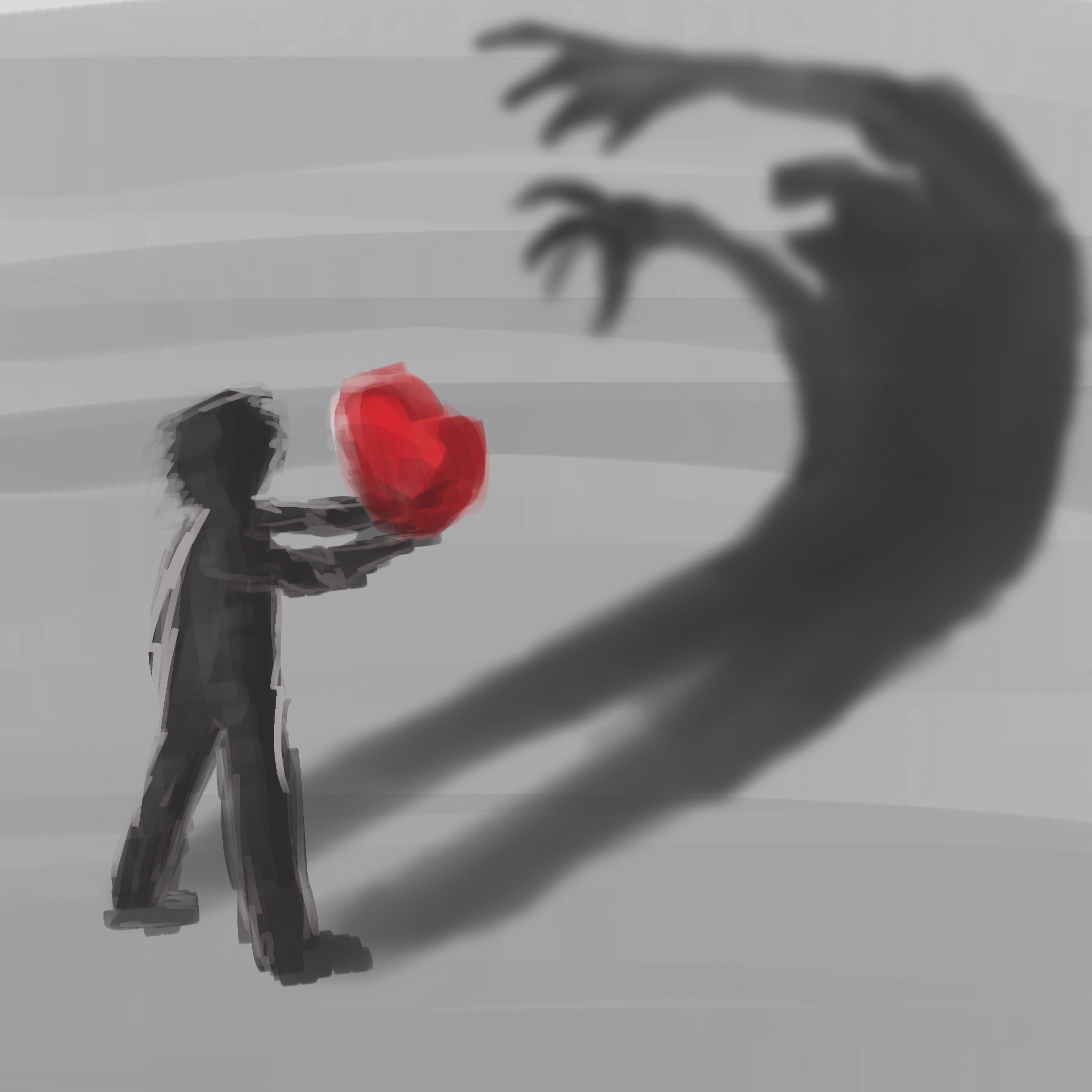Pause, name it and reconnect
November 14, 2024
 Ethan Lam
Ethan LamIn this column, we are figuring out how to handle our fears, and today, these authors feel tangled in fear. So, in an effort to untangle ourselves, we are naming our fear.
We are afraid that since people’s fears for the world right now are so large, looming and shared, they will be exceptionally hard to manage. These fears are here to stay. But this is not a reason to give up on our fear management strategies. This is not a reason to throw up our hands in defeat. This is a reason to dig in and tap into the ways we have learned to live through fear.
This week, we tapped into the wisdom of Oliver Goodrich, the director of the Rachel Lord Center for Religious and Spiritual Life. In addition to his other roles as director, he counsels students who are struggling to find meaning in their lives, guided by his training in spiritual direction. We sat down with Goodrich to talk about what fear is and how we can be in relationship to it instead of feeling overwhelmed by it.
We first need to name our fear.
“Some people,” Goodrich said, “aren’t even aware that fear is happening. It takes over our consciousness and clouds out our vision.”
He describes fear like a dark cloud that surrounds us.
“It casts a shadow on our path, diminishes our light or maybe even prevents us from seeing the path forward,” Goodrich said.
However, Goodrich notes that fear does not always stand in our way.
“Fear is not necessarily a bad thing,” he said. “It is actually quite natural. After all, from the perspective of evolutionary biology, fear helps us adapt and respond to threats in our environment. When we recognize that fear is happening,… we gain the ability to name the source of the fear and choose how we want to respond to it.”
Recognizing the fear, then, allows us to “be in relationship to our fear,” instead of being overwhelmed or incapacitated by it.
“Relationship is important, because part of how fear functions is that it turns us away from connection,” Goodrich said. “So much of spirituality is about connection: connection to higher power, connection to our higher self, connection to ancestors, to nature, to community or to our best values.… Being able to name fear and recognizing it for what it is can help us begin to be in relationship with it and begin to reclaim a sense of agency and choice about how we want to respond to it.”
These authors are already putting this practice of naming into use. For example, we experienced writer’s block with this article—until we named our fear. We realized that we were in a fog of fear: We were afraid of not doing the topic of fear justice. Really, we were afraid of failure. Once we could name this fear, we could be in relationship to it and manage it. To manage a fear of failure, we relaxed our expectations of excellence, extended ourselves grace and made a backup plan. Once we named our fear, we could be in relationship with you, our readers.
But if we do not know that fear is acting on us, how can we name it? Goodrich tells us we need to slow down.
“The busyness, the hustle and the grind contribute to the sense of fear and anxiety that so many of us feel, and being able to slow down is a precondition for being able to recognize it,” Goodrich said. “We have such a hustle and grind culture—and not only on this campus. It’s in the air we breathe in society. And it’s to our detriment.”
In order to look inward and name our fears, we need to pause. Once we have paused, we can journal, practice mindfulness, go out into nature. Any number of these things can help us introspect and name fear. But if we never pause, if we never slow down, we cannot clear the fog.
Once we have paused and named our fear, what’s next? What are the antidotes to fear?
“There is no cure for it,” Goodrich said. “To be alive is to experience fear.”
But how can we challenge our fears?
“The opposite of fear is love,” Goodrich said, which he learned from the Ignatian spiritual tradition. “I would use ‘love’ in the courage sense of the word, not love in the happy-go-lucky sentimental sense of love. In the felt, bodily sense of courage, it usually means an elevated heart rate. I can feel adrenaline in my body, and I choose to do what I know to be right, even though it might seem scary or risky.”
What does it look like to exercise courage as opposed to fear?
“Fear pulls us away from others. It disconnects us. Fear works against courage,” Goodrich said.
Then exercising courage in the face of fear means reconnecting: connecting with our values, connecting with ourselves, with the people around us and even with the more-than-human world.
Goodrich left us with a poem, “Everything is Waiting for You,” by David White, that begins, “Your great mistake is to act the drama as if you were alone, as if life were a progressive and cunning crime with no witness to the tiny, hidden transgressions. To feel abandoned is to deny the intimacy of your surroundings.”

Comments
Before submitting a comment, please review our comment policy. Some key points from the policy: